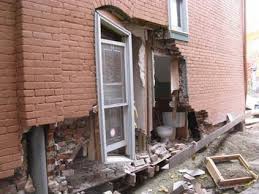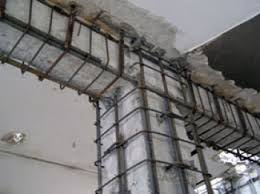Design and Construction Defect Claims
Construction Defect
This is a simple question with a complicated answer. Construction defects are one of the most common causes of disputes and litigation in the construction industry. There is often disagreement when it comes to identifying what a construction defect is because of the differing viewpoints and interests of those asking the question and/or making the determination.
Generally speaking, a deficiency in the design or construction of a building or structure resulting from a failure to design or construct in a reasonably workmanlike manner, and/or in accordance with a buyer’s reasonable expectation. The most dangerous defects have the capacity to fail, resulting in physical injury or damage to people or property. However, many defects present no increased risk of injury or damage to other property but nevertheless cause harm to the property owner in the form of loss of use, diminution in value, and extra expenses incurred while defects are corrected. This latter type of defect is often referred to as a passive defect. Whether, and to what to extent, coverage applies in liability policies for claims alleging construction defects is a matter of serious debate both in insurance circles and in the courts.
As experts in construction management, we evaluates and analyzes a wide array of design and construction problems, including construction defects. Despite the best laid plans, construction defects typically occur. e-basel Consulting has a long history of evaluating and analyzing construction defects for all parties involved in the construction process including, but not limited to, the following:
- Owners and developers.
- Contractors and subcontractors.
- Attorneys.
- Architects, designers, and engineers.
- Vendors and material suppliers.
- Insurance and bonding companies.
- Banks and lending institutions.
- Government and municipal agencies.
Design and construction defects can and do occur due to a variety of problems, including the following:
- The owner chooses materials or hardware or provides owner-furnished material, which is not sufficient for the purpose intended.
- The architect/engineer specifies the incorrect material, or fails to specify the materials to be used.
- The contractor’s quality control and workmanship is poor or the contractor didn’t follow the proper construction/installation guidelines.
- The contractor/subcontractor uses substandard materials in an effort to reduce costs.
- The material supplier’s product is insufficient or defective.
All of the above, as well as many other design and construction defects, can lead to issues such as cosmetic defects, water intrusion/water infiltration, mold, structural instability, excessive foundation movement, code violations, etc. These can result in problems during construction, as well as claims and disputes after the project is completed.
e-basel Consulting provides a wide range of design- and construction defect-related services to both assist our clients in avoiding potential issues during construction, as well as performing after-the-fact site investigation and forensic analysis to determine the root cause of the construction defects.
Design and construction defects can be caused by a variety of problems, some of which include:
- Poor workmanship: If construction work is not performed to the appropriate standards or with the necessary care, it can result in defects.
- Material defects: The use of substandard or defective materials can lead to structural and aesthetic defects.
- Inadequate design: If the design is flawed or does not take into account the necessary factors, such as site conditions, soil characteristics, or environmental factors, it can result in design defects.
- Code violations: Failure to comply with local building codes and regulations can result in defects and expose the parties involved to legal and financial liabilities.
- Poor communication: Miscommunication or lack of communication between the project team members, including the owner, architect, engineer, and contractor, can lead to design and construction defects.
- Environmental factors: Natural disasters, such as hurricanes, earthquakes, or floods, can result in design and construction defects.
- Changes in site conditions: Unforeseen changes in site conditions, such as soil conditions, water tables, or underground utilities, can result in design and construction defects.
At E-Basel, we understand the various causes of design and construction defects and have the expertise to assist clients in identifying and addressing these issues. Our team of experts can help clients evaluate the cause and extent of design and construction defects and provide recommendations on the appropriate course of action to minimize their impact. Contact us today to learn more about how we can help with design and construction defect-related issues.
Our services include, but are not limited to, the following:
- Construction Drawing and Specification Review.
- Design Consistency and Constructability Analysis.
- On-site Inspections/Construction Standard of Care Reviews.
- Relevant Building Code and Industry Standard Compliance.
- Root Cause Analysis.
- Remediation and Repair Recommendations/Cost to Repair.
- Forensic Construction Defect Evaluation.
- Destructive/Non-destructive Testing.
- Building Envelope/Moisture Infiltration.
- Water Damage/Mold.
- Property Damage Assessment.
- Material Quality.
- Selection and Coordination with Other Experts.
- Quantification of Construction Defect Damages.
- Direct cost of Repair.
- Diminished Value Analysis.
- Loss of Use and Other Indirect Damages
Construction Drawing and Specification Review: Our services encompass thorough reviews of construction drawings and specifications to ensure compliance with regulatory requirements and project objectives. We meticulously assess design accuracy, clarity, and completeness to preempt potential issues and optimize construction processes.
Design Consistency and Constructability Analysis: We conduct detailed analyses to ensure design consistency and assess constructability challenges. Our experts evaluate design feasibility, integration of systems, and practicality in execution, providing proactive solutions to enhance project efficiency and minimize risks.
On-site Inspections/Construction Standard of Care Reviews: Through on-site inspections and rigorous reviews, we uphold stringent construction standards of care. We verify adherence to safety protocols, quality benchmarks, and contractual obligations, offering insights to maintain project integrity and mitigate liability.
Relevant Building Code and Industry Standard Compliance: Our specialists meticulously evaluate projects for compliance with relevant building codes and industry standards. We ensure alignment with regulatory requirements, promoting safety, sustainability, and legal conformity throughout the construction process.
Root Cause Analysis: We specialize in conducting root cause analyses to pinpoint underlying factors contributing to construction issues. Our systematic approach identifies primary causes of defects or failures, enabling targeted remediation strategies and prevention of recurrence.
Remediation and Repair Recommendations/Cost to Repair: We provide comprehensive recommendations for remediation and repair, accompanied by detailed cost estimates. Our tailored solutions prioritize cost-effectiveness and quality, facilitating informed decision-making and swift resolution of construction challenges.
Forensic Construction Defect Evaluation: Utilizing forensic techniques, we meticulously evaluate construction defects to determine their origin and impact. Our expert analyses provide evidential support for dispute resolution and litigation, ensuring clarity and accuracy in complex construction disputes.
Destructive/Non-destructive Testing: We offer both destructive and non-destructive testing methodologies to assess structural integrity and material performance. Our testing protocols deliver precise data to inform decisions on repairs, maintenance, and durability enhancements.
Building Envelope/Moisture Infiltration: Specializing in building envelope assessments, we identify vulnerabilities to moisture infiltration and deterioration. Our proactive strategies mitigate risks of structural damage and indoor air quality issues, safeguarding building longevity and occupant health.
Water Damage/Mold: We conduct thorough evaluations of water damage and mold issues, identifying sources and assessing remediation needs. Our comprehensive approach ensures effective restoration and prevention strategies, preserving property value and occupant well-being.
Property Damage Assessment: Our experts perform detailed assessments to quantify property damage resulting from construction defects. We provide accurate evaluations of structural and aesthetic impairments, supporting fair compensation and restoration efforts.
Material Quality: We scrutinize material quality to ensure compliance with specifications and performance expectations. Our assessments encompass durability, sustainability, and suitability for intended applications, enhancing project resilience and longevity.
Selection and Coordination with Other Experts: We facilitate seamless collaboration with other specialists, coordinating efforts to address multifaceted construction challenges comprehensively. Our integrated approach maximizes expertise and resources for optimal project outcomes.
Quantification of Construction Defect Damages: We specialize in quantifying damages arising from construction defects, employing rigorous methodologies for accurate financial assessments. Our analyses support negotiation, arbitration, or litigation strategies, ensuring equitable resolution.
Direct Cost of Repair: We provide precise estimates of direct repair costs based on detailed assessments and industry benchmarks. Our transparent pricing models empower clients with cost-effective solutions and budgetary clarity for informed decision-making.
Diminished Value Analysis: Our experts conduct thorough analyses to quantify diminished property value resulting from construction defects. We apply robust valuation techniques to assess economic impacts accurately, supporting fair compensation and risk management strategies.
Loss of Use and Other Indirect Damages: We evaluate indirect damages such as loss of use and consequential losses resulting from construction defects. Our comprehensive assessments consider operational disruptions and financial impacts, guiding mitigation efforts and legal recourse.
PREVENTION AND RESOLUTION
All parties involved in the design and construction of a project want to prevent construction defects. For a contractor, implementation of a quality assurance/quality control program is important as it will serve to minimize defective work. The implementation of this program provides the contractor with an opportunity to repair defective work prior to the completion of the project, which may reduce monetary damage to the contractor and protect the contractor from future litigation.
Preventing and Resolving Construction Defects: A Comprehensive Guide for Contractors
Introduction: In the construction industry, preventing and resolving construction defects is of paramount importance to all parties involved in a project. For contractors, implementing a robust quality assurance/quality control program is crucial in minimizing defective work and protecting against potential financial loss and litigation. In this article, we will explore the key strategies and best practices that contractors can employ to prevent and resolve construction defects, ensuring the successful completion of projects and client satisfaction.
I. Importance of a Quality Assurance/Quality Control Program
- Mitigating Defective Work: A well-designed quality assurance/quality control program serves as a proactive approach to minimize the occurrence of construction defects. By implementing comprehensive quality control processes, contractors can identify and rectify potential issues before they escalate, reducing the risk of defective work. This not only protects the contractor’s reputation but also helps to avoid costly rework and delays.
- Early Detection and Repair: One of the primary advantages of a quality assurance/quality control program is the opportunity it provides contractors to identify and address defective work during the construction phase. By conducting regular inspections and quality checks, contractors can identify deviations from project specifications, substandard workmanship, or material deficiencies. Timely detection and repair not only ensure compliance with project requirements but also help prevent further complications down the line.
II. Best Practices for Preventing Construction Defects
- Thorough Planning and Design: A crucial step in preventing construction defects is meticulous planning and design. This involves collaborating closely with architects, engineers, and other stakeholders to ensure accurate project documentation, including detailed plans, specifications, and clear construction guidelines. A comprehensive understanding of the project scope and requirements lays the groundwork for successful execution and minimizes the chances of errors or misunderstandings.
- Skilled Workforce and Subcontractor Management: Employing a skilled and qualified workforce is essential in maintaining high-quality construction standards. Contractors should prioritize hiring experienced professionals who possess the necessary expertise and adhere to industry best practices. Additionally, effective subcontractor management, including rigorous vetting processes, clear communication, and regular performance evaluations, helps maintain consistent quality across all project phases.
III. Resolving Construction Defects: Strategies for Success
- Proactive Communication: Open and effective communication between contractors, clients, and other project stakeholders is vital in resolving construction defects. Promptly addressing any concerns or issues raised by clients, conducting thorough investigations, and providing transparent updates on the progress of defect resolution builds trust and demonstrates the contractor’s commitment to client satisfaction.
- Collaborative Problem-Solving: When faced with construction defects, a collaborative approach to problem-solving yields the best results. Engaging in constructive dialogue with clients, design professionals, and subcontractors can lead to efficient and mutually agreeable solutions. Contractors should prioritize finding resolution methods that balance cost-effectiveness, project timelines, and client expectations, while ensuring compliance with applicable regulations and standards.
Conclusion: Preventing and resolving construction defects requires a proactive and holistic approach from contractors. By implementing a robust quality assurance/quality control program, following best practices in planning and execution, and adopting effective strategies for defect resolution, contractors can uphold high standards of construction quality, safeguard their reputation, and deliver successful projects that meet or exceed client expectations. Embracing a commitment to excellence sets the stage for long-term success and growth in the competitive construction industry.



